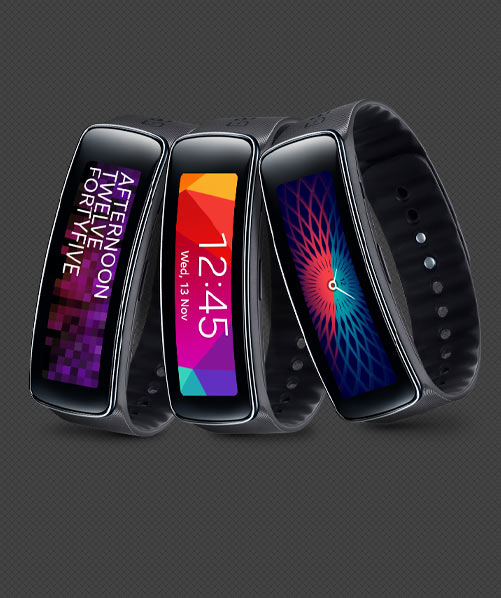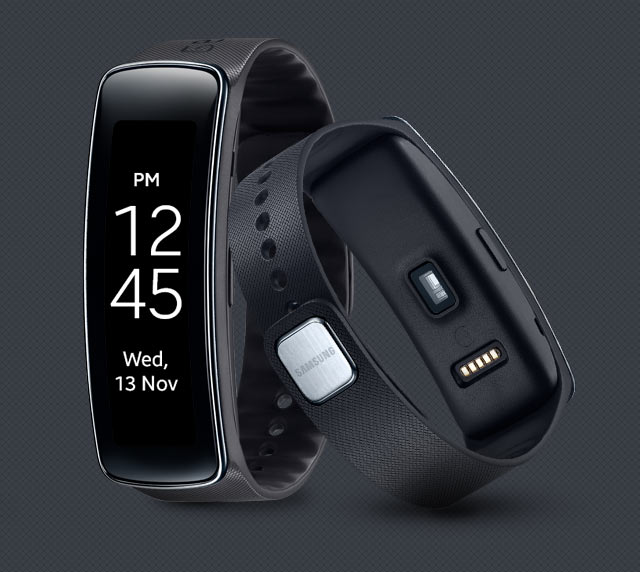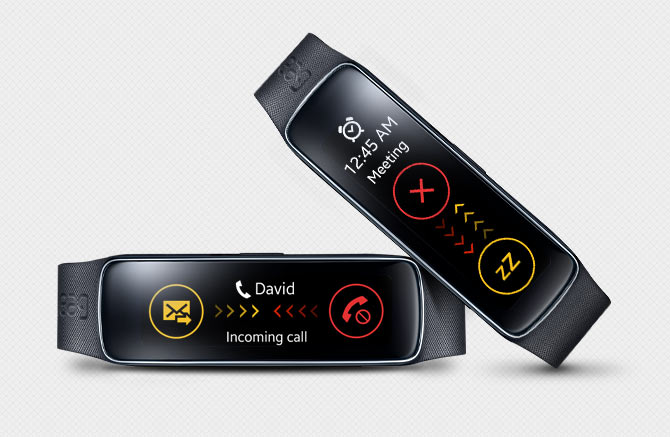
With the second iteration of Samsung Gear, the company has replaced its earlier Android interface with Tizen. But given that the Gear Fit retails for Rs 15,450 -- which is more than the full price of a Motorola Moto G -- is it worth a look?
Samsung somewhat kickstarted the trend of smartwatches -- wearable computers that slip on to your wrist and effectively supplement your smartphone's functionality -- by introducing the Galaxy Gear with the Galaxy Note 3.
The Gear was rife with problems however, being expensive, limited in its app and Android functionality and really functioning more in unison with the Note 3 than on its own steam.
Also, despite its metallic looks, it was far from the sleekest watch you'd have on your wrist. Did we mention it was expensive?
The Samsung Gear Fit takes a different direction.
This time, the smartwatch is aimed specifically at functions such as measuring your heart rate, calculating the number of steps and calories burnt in a day, and features modes for exercise like running, hiking, walking, etc.
It's also capable of measuring your sleep cycle if you so wish.
Please click NEXT to continue reading
Reader Invite
Are you a gadget/gaming wizard/afficianado? Would you like to write on gadgets, gaming, the Internet, software technologies, OSs and the works for us? Send us a sample of your writing to gadgetsandgaming@rediffmail.com with the subject as 'I'm a tech wizard/afficianado' and we will get in touch with you.

Look and feel
Even if it learned nothing from the device's pricing, it's obvious that Samsung learned lessons (and hints) for improving the Gear Fit’s looks.
It's now a sleek, curved black module with metallic lining and a detachable strap that can be changed depending on your requirement and comfort.
The module contains significantly less bulge than the original Gear and feels more comfortable thanks to the overall curved nature.
The body itself is now IP67 certified, making it dust and water-resistant. So if you're worried about excessive sweat or the occasional dust storm damaging the device, you can rest easy.
It's a good thing you'll be able to change the straps though, seeing as how the Gear Fit's default black plastic strap comes off as slightly pedestrian. It is comfortable and easy to adjust though.
In terms of button layout, Samsung has made a few baffling choices.
There's a power button on the main body and rather than implement some kind of micro USB slot, you'll need a USB dock to charge the device (which must be carried separately).
On the back, you'll find the connections for the USB dock along with the heart rate sensor.
As a whole, it's an improvement over what the Galaxy Gear initially offered and certainly comes off as more casual chic than bloated retro sci-fi.
Please click NEXT to continue reading

Specs
The Samsung Gear Fit is no powerhouse and quite frankly, it was never meant to be. The original Gear featured an 800 MHz Exynos SoC with 512 MB RAM and 4 GB internal storage along with a BSI camera.
The Gear Fit instead includes an ARM Cortex M4 CU clocked at 180 MHz. The Super AMOLED display has been increased in size to 1.84 inches and converted into a Curved AMOLED screen with 432x128 resolution.
The display can be viewed in either portrait or landscape mode and the display occupies significantly more real estate this time around, making it slightly easier to mash those tiny icons. Not that you'll have anything on the scale of Android apps to tinker around with though.
The Gear Fit implements an accelerometer, gyroscope and the aforementioned heart rate sensor along with Bluetooth 4.0 LE (Low Energy) which is necessary to tether your smartwatch to your smartphone.
This also enables a stronger battery life for the smartwatch.
How much better is it compared to the original Gear?
According to Samsung, you'll net roughly 3 to 4 days of usage but with lighter use, it can last you for five days.
Above average usage actually puts the device at somewhere close to a little more than 2 days of usage and this frankly isn't all that bad.
If you're the kind who only uses smartwatches sparingly, leaving the real heavy lifting to your phone, then it's entirely possible to have it last for the major part of the week.
The Gear Fit is primarily aimed at exercise anyway, so you'll only use it for key times in the day. If you're travelling constantly, it could be a slight annoyance after the second day when you need to recharge the device.
Please click NEXT to continue reading

Features
The Gear Fit's interface incorporates the same aesthetics seen in Samsung's TouchWiz interfaces so it should feel familiar to users. Instead of Android, Tizen has been used to create a custom Real Time OS or RTOS. This is outfitted with custom apps and even a few third party apps for use.
Firstly, you'll need to set up your S Health credentials. After that, you're free to use the device as a pedometers or heart rate sensor, change the wallpapers around, monitoring your sleep patterns, modify the clock settings and yes, receive phone calls.
The Curved AMOLED display looks incredibly good in all these circumstances. It can be viewed clearly even in direct sunlight and Samsung's RTOS conveys the information as cleanly as possible without cluttering the screen.
The device is also capable of functioning without being tethered to your smartphone and when tethered, it will serve to provide app notifications for your main device.
One of the biggest problems with the Gear Fit is that you'll require a Galaxy smartphone to use it. As with the original Gear series, which was tied to the Samsung Galaxy Note 3, you'll be significantly restricted in where you want to use the Gear Fit.
If you have a Sony Xperia Z or Google Nexus 5, then this isn't the device for you.
Also, oddly enough, many of the fitness functions on the Gear Fit such as the Pedometer have to be started manually. This would make sense for a smartphone but a smartwatch with a heart sensor directly attached to your wrist?
Even if there were battery life concerns, this should have at least been made an option for users.
Please click NEXT to continue reading

Verdict
Samsung has made some decent changes with the Gear Fit and while the custom RTOS is good enough to fulfill one's fitness needs -- despite requiring a bit too much micro-management at times -- it doesn't offer enough benefit for its price to effectively warrant a look.
It's got the look and wants to take care of you but when you consider that Android smartwatches are on the way and won't limit you to one brand of smartphones, it's hard to see much potential for Samsung's Gear lineup in the future.
Click on MORE to see another feature...
Photographs: samsung.com